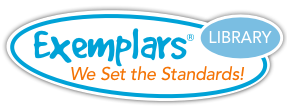Grade 3 - Measurement Unit
The Measurement Unit involves identifying the attribute being measured (such as length, area, time, capacity or weight); selecting an appropriate unit (such as a unit of length, area, time, capacity or weight) and comparing that unit with what is being measured. Questions to answer may include:
- How does a unit of length differ from a unit of area?
- How can you use the operations of addition, subtraction, multiplication and/or division to solve problems involving the measurement of different attributes?
Math Concepts and Skills:
The student selects appropriate units, strategies, and tools to solve problems involving customary and metric measurement.
The student:
- finds the perimeter of a polygon or a missing length when given the perimeter and remaining side lengths in problem situations.
- uses multiplication to find the area of rectangles with whole number dimensions (the number of rows times the number of square units in each row).
- decomposes figures formed by rectangles into non-overlapping rectangles to determine the area of the original figure using the additive property of area.
- finds solutions to problems involving addition and subtraction of time intervals.
- justifies when it is appropriate to use measurements of liquid volume (capacity) or weight and finds liquid volume (capacity) or weight using appropriate units and tools.
Summative Assessment Task
Students determine all the possible dimensions of a rectangular pen that can be made for a horse named Star and the one that has the largest area.
Instructional Tasks/Formative Assessments
Students determine how much string is needed to outline where a new shed will be built. Students also determine how many tiles are needed to cover the floor of the shed.
Using a set number of crayons, students determine how many rectangles can be made and find the rectangle with the largest area.
Students determine which tool is appropriate to weigh a box turtle and which tool is appropriate to calculate the amount of vitamins needed to keep the turtle healthy. Students will also determine the weight of the box turtle and how many drops of vitamins are needed for the turtle's water dish.
Using 20 pieces of pipe cleaners, students determine how many rectangles can be glued on a piece of paper.
Students determine how many Saturdays Kyle has made and eaten his own breakfast.
Students determine how many pieces of construction paper are needed for a new bulletin board.
Using given dimensions, students determine how many squares are needed to make a patchwork wall design.
Students determine what time Mindy goes to bed after doing a set number of activities after school.
Given 26 sections of fence, students determine possible dimensions for Mary's vegetable garden.
